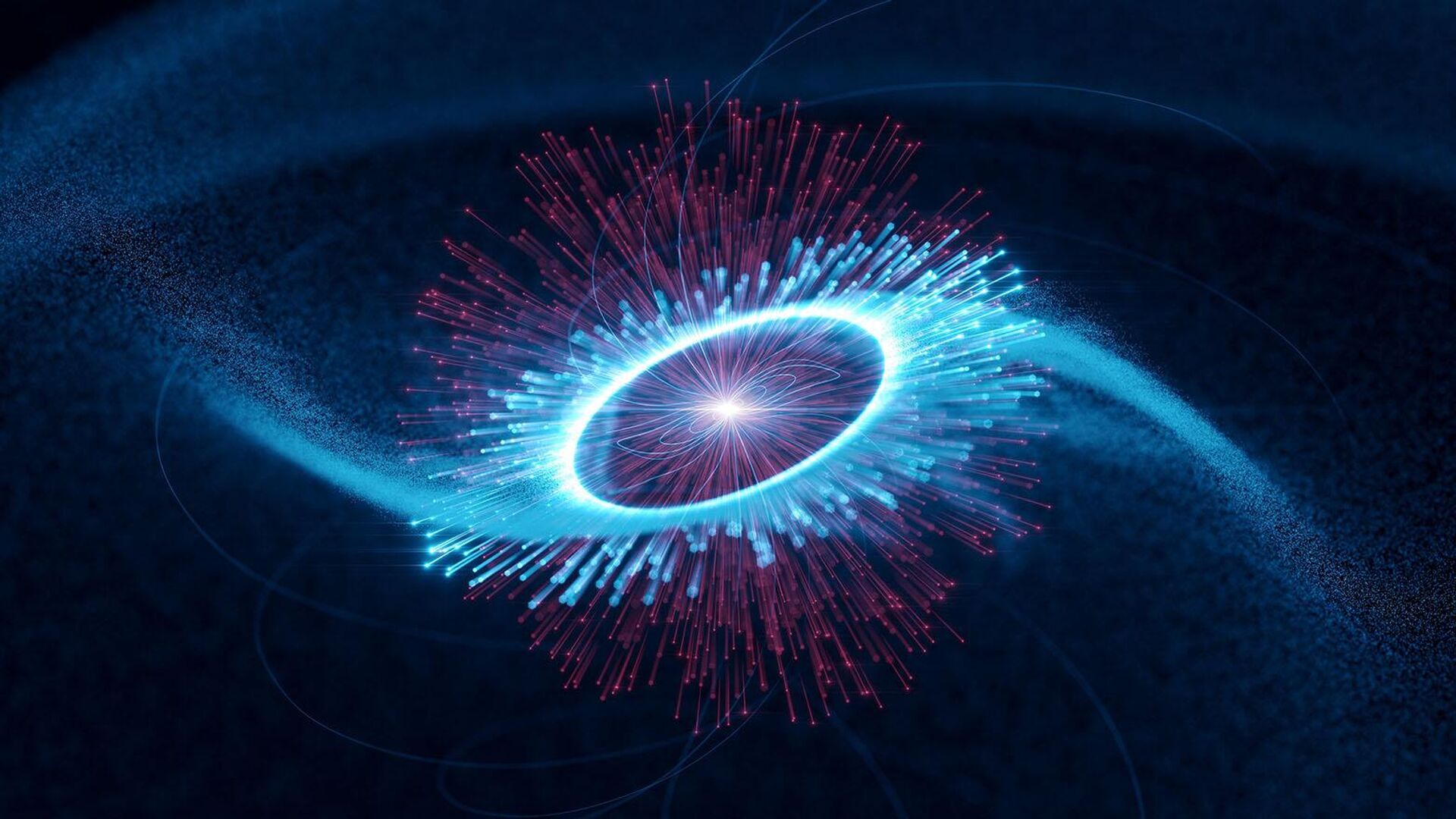https://sputnikglobe.com/20231007/powerful-energy-from-mysterious-dead-star-strikes-earth-leaves-scientists-stunned-1113996233.html
Powerful Energy From Mysterious 'Dead Star' Strikes Earth, Leaves Scientists Stunned
Powerful Energy From Mysterious 'Dead Star' Strikes Earth, Leaves Scientists Stunned
Sputnik International
Earth was hit by a 20trl electron volts burst of energy from a dead star known as the Vela pulsar, thus challenging existing knowledge of pulsars, as it was the highest ever recorded emission.
2023-10-07T04:08+0000
2023-10-07T04:08+0000
2023-10-07T04:05+0000
beyond politics
science & tech
earth
space
space exploration
pulsar
https://cdn1.img.sputnikglobe.com/img/07e7/0a/07/1113996074_1:0:1560:877_1920x0_80_0_0_b40d7ac1ed03579cd15562cb758eed6f.jpg
Astronomers were recently left astounded when the Vela pulsar unleashed on Earth an energy burst of 20 trillion electron volts - the most high-energy gamma rays ever detected from a pulsar.The phenomenon, captured by scientists, challenges the current understanding of pulsars and their energy emissions.Previously considered a relatively normal pulsar, the Vela pulsar's emission was 200 times more energetic than any previously observed radiation from this object. This has prompted a reconsideration of the traditional theory that attributes radiation to fast electrons created and emitted by the pulsar's magnetosphere.Astronomers are now exploring alternative explanations, including the possibility that particles from the Vela pulsar are being propelled outside its magnetic membrane or that there are magnetic fields in unexpected areas.The groundbreaking discovery not only challenges our understanding of pulsars but also offers the potential to deepen our knowledge of other magnetized objects, such as black hole magnetospheres.The study was published in Nature Astronomy journal.
https://sputnikglobe.com/20231002/photos-jwst-spots-dozens-of-rogue-jupiter-sized-planets-in-orion-nebula-close-up-1113861100.html
earth
Sputnik International
feedback@sputniknews.com
+74956456601
MIA „Rossiya Segodnya“
2023
News
en_EN
Sputnik International
feedback@sputniknews.com
+74956456601
MIA „Rossiya Segodnya“
Sputnik International
feedback@sputniknews.com
+74956456601
MIA „Rossiya Segodnya“
vela pulsar, dead star, highest ever recorded pulsar emission, gamma-ray photons emission, what is vela pulsar
vela pulsar, dead star, highest ever recorded pulsar emission, gamma-ray photons emission, what is vela pulsar
Powerful Energy From Mysterious 'Dead Star' Strikes Earth, Leaves Scientists Stunned
The Vela pulsar is a type of neutron star made up of photons with energies measured to be higher than one teraelectronvolt. The specimen is said to be located some 1,000 light-years from Earth, and spans about 12 miles in diameter.
Astronomers were recently left astounded when the Vela pulsar unleashed on Earth an energy burst of 20 trillion electron volts - the most high-energy gamma rays ever detected from a pulsar.
The phenomenon, captured by scientists, challenges the current understanding of pulsars and their energy emissions.
"We have discovered gamma-ray photons reaching 20 tera electron volts (TeV) from the Vela pulsar. These are the highest-energy gamma rays ever detected from a pulsar," study co-author Arache Djannati-Ataï, a CNRS researcher, told a science news agency.
Pulsars are the remnants of dead stars that have exploded into supernovae, emitting beams of electromagnetic radiation visible on Earth at regular intervals. While they are known to be incredibly dense and energetic, the Vela pulsar's extraordinary burst has left experts perplexed.
Previously considered a relatively normal pulsar, the Vela pulsar's emission was 200 times more energetic than any previously observed radiation from this object. This has prompted a reconsideration of the traditional theory that attributes radiation to fast electrons created and emitted by the pulsar's magnetosphere.
![Orion Nebula in NIRCam long-wavelength [infrared] channel, imaged by James Webb Space Telescope (JWST) Orion Nebula in NIRCam long-wavelength [infrared] channel, imaged by James Webb Space Telescope (JWST) - Sputnik International, 1920, 02.10.2023](https://cdn1.img.sputnikglobe.com/img/07e7/0a/02/1113861605_0:77:2048:896_1920x0_80_0_0_c22558da07a8cd3f4b2480deaf4c3dff.png)
2 October 2023, 15:37 GMT
"This is basically a stress test for our theories," says Hayk Hakobyan, an astrophysicist at Columbia University who was not part of the study.
Astronomers are now exploring alternative explanations, including the possibility that particles from the Vela pulsar are being propelled outside its magnetic membrane or that there are magnetic fields in unexpected areas.
The groundbreaking discovery not only challenges our understanding of pulsars but also offers the potential to deepen our knowledge of other magnetized objects, such as black hole magnetospheres.
The study was published in
Nature Astronomy journal.


![Orion Nebula in NIRCam long-wavelength [infrared] channel, imaged by James Webb Space Telescope (JWST) Orion Nebula in NIRCam long-wavelength [infrared] channel, imaged by James Webb Space Telescope (JWST) - Sputnik International, 1920, 02.10.2023](https://cdn1.img.sputnikglobe.com/img/07e7/0a/02/1113861605_0:77:2048:896_1920x0_80_0_0_c22558da07a8cd3f4b2480deaf4c3dff.png)
